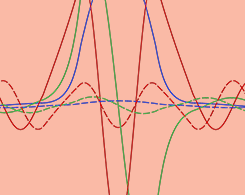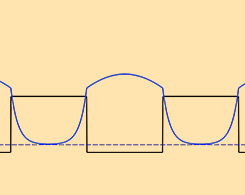Semiconductor Devices Blog Posts

Simulating the Tunneling Current Across a Graded Heterojunction
Interested in semiconductor design? Get an intro to the theory behind quantum tunneling as well as a demonstration of simulating the tunneling current across a graded heterojunction.

Self-Consistent Schrödinger-Poisson Results for a Nanowire Benchmark
This benchmark model of a GaAs nanowire validates the Schrödinger-Poisson Equation multiphysics interface, which is useful for modeling systems with quantum-confined charge carriers.

Evaluating a Schottky Diode with a Semiconductor Benchmark Model
We present a model of a Schottky diode with benchmarked results, validating the use of simulation to analyze the performance of semiconductor devices.

Studying the Program and Erase Cycle of an EEPROM Device
Using the Semiconductor Module, you can study the program and erase cycles of an electrically erasable programmable read-only memory (EEPROM) device.

Optimizing ISFET Designs with Multiphysics Simulation
Ion-sensitive field-effect transistors (ISFETs) measure pH levels for soil analysis, the production of dairy products, and more. Multiphysics simulation can help us optimize these devices.

Modeling a MOS Capacitor with the Semiconductor Module
MOS capacitors (MOSCAPs) contain 3 main parts: a semiconductor body or substrate, an insulator film, and a metal electrode (or gate). You can use the Semiconductor Module to model MOSCAP designs.

Learning Quantum Mechanics Concepts with Double-Barrier Structures
Quantum mechanics is a notoriously difficult subject to learn — and teach. Modeling a double-barrier structure is an effective way to teach quantum mechanics concepts to physics students.

Computing the Band Gap in Superlattices with the Schrödinger Equation
You can easily compute the effective band gap for a superlattice structure by using a predefined Schrödinger Equation interface and building a simulation application.
